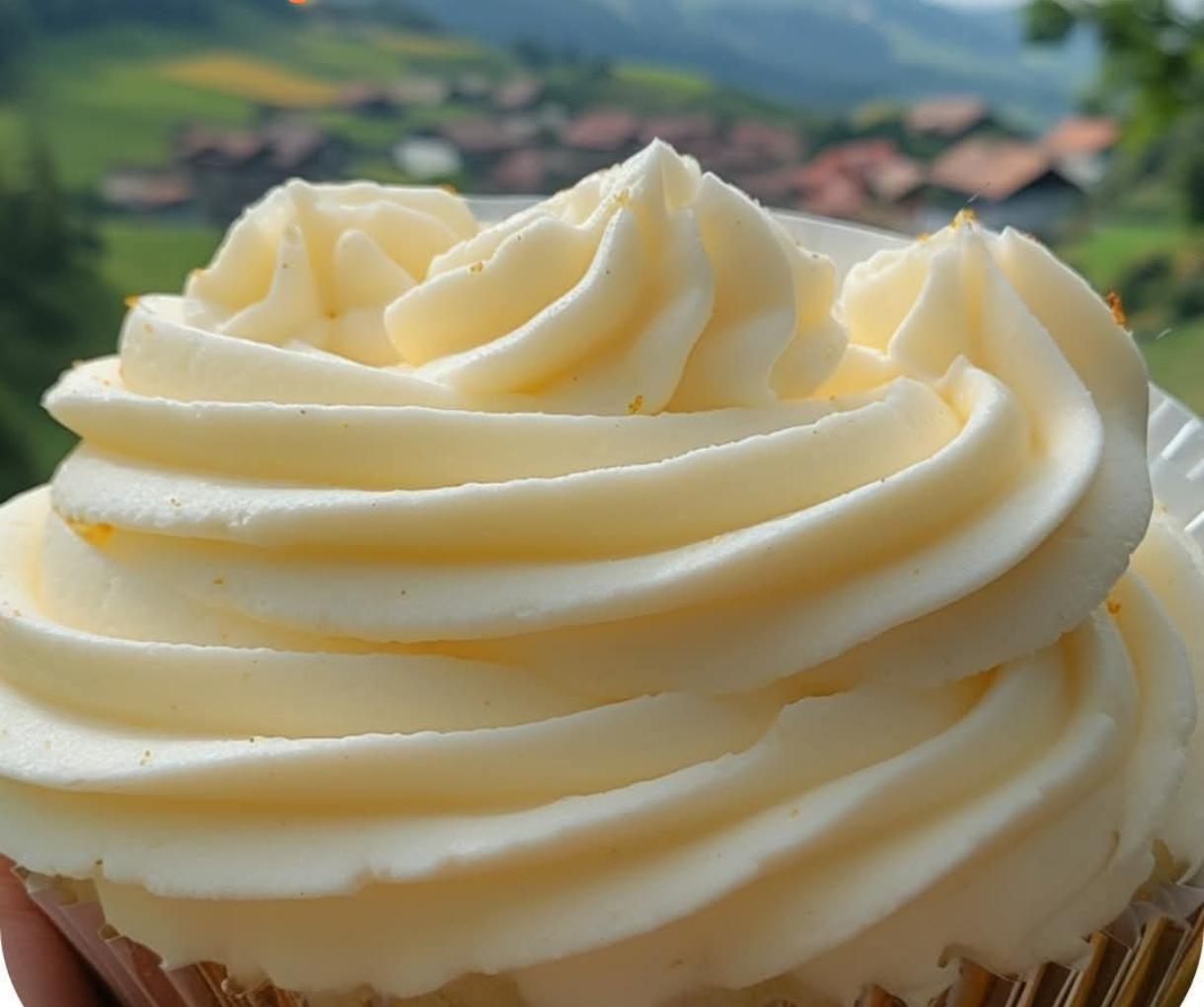Here’s a detailed recipe for Russian Buttercream, complete with its history, formation, ingredients, instructions, methods, and a conclusion for those who love this smooth and creamy frosting.
Russian Buttercream
Introduction
Russian Buttercream is a simple yet luxurious frosting that has been growing in popularity due to its smooth, silky texture and rich taste. Unlike traditional buttercreams that rely on powdered sugar or egg whites, this version is made using sweetened condensed milk—a staple ingredient in many Eastern European desserts. This gives the buttercream a uniquely creamy consistency and a delightful sweetness without being overwhelmingly sugary.
Perfect for frosting cakes, cupcakes, and pastries, Russian Buttercream is easy to make with just three ingredients and a single mixing method. It’s beloved by both professional bakers and home enthusiasts for its ease, stability, and ability to pair beautifully with various cake flavors.
History of Russian Buttercream
Russian Buttercream, sometimes called Sweetened Condensed Milk Buttercream (SCM Buttercream), is believed to have originated in Russia and Eastern Europe, where condensed milk has long been a popular ingredient in sweets and desserts. Since traditional buttercream recipes often require sugar syrup or egg whites, Russian bakers found a way to simplify the process by using condensed milk as the primary sweetener.
This buttercream is less sugary and more buttery compared to American Buttercream and doesn’t require cooking like Italian or Swiss Meringue Buttercreams. It has since become popular worldwide due to its ease of preparation and luxurious taste.
Ingredients
- 1 cup (2 sticks) unsalted butter – softened to room temperature
- 14 ounces (1 can) sweetened condensed milk – chilled for at least 1 hour
- 1 teaspoon pure vanilla extract – for added depth of flavor
Optional Ingredients:
- Pinch of salt – to balance the sweetness
- Cocoa powder (2-3 tbsp) – for a chocolate version
- Instant coffee (1 tsp, dissolved in 1 tsp hot water) – for a mocha flavor
- Fruit puree (1/4 cup, strained to remove seeds) – for a fruity variation
Instructions
Step 1: Whipping the Butter
- Place the softened butter in a large mixing bowl.
- Using a stand mixer or hand mixer, beat the butter on medium-high speed for 3-5 minutes until it becomes light, fluffy, and pale in color. This step is crucial for achieving a silky buttercream texture.
Step 2: Adding the Condensed Milk
- Slowly pour in the chilled sweetened condensed milk, beating continuously on medium speed.
- Increase the speed to high and continue beating for another 3-4 minutes until the mixture is smooth and creamy.
Step 3: Adding Vanilla and Adjustments
- Add the vanilla extract and a pinch of salt (if using).
- Beat for another 30 seconds to 1 minute until fully incorporated.
- If the buttercream appears too soft, refrigerate for 10-15 minutes, then whip again before using.
Formation and Texture
- The buttercream forms a light, silky, and stable texture due to the air incorporated while whipping the butter.
- Unlike traditional buttercreams, it does not crust over, making it perfect for smooth cake finishes and piping decorations.
- It holds well at cool room temperatures, but may soften slightly in very warm climates.
How to Use Russian Buttercream
- Cake Frosting: Perfect for layered cakes like vanilla, chocolate, or red velvet.
- Cupcake Topping: Pipe beautiful swirls using a piping bag and star tip.
- Macaron Filling: Pairs well with macarons, adding a creamy center.
- Cookie Sandwich Filling: Spread between cookies for a soft, creamy bite.
- Doughnut Glaze Substitute: Works great as a filling for doughnuts.
Variations and Flavor Enhancements
- Chocolate Russian Buttercream: Add ¼ cup melted and cooled dark chocolate.
- Coffee Russian Buttercream: Dissolve 1 tsp instant coffee in 1 tsp hot water and mix in.
- Fruit Russian Buttercream: Blend in fruit puree (strawberry, raspberry, or mango).
- Nutty Russian Buttercream: Mix in 1-2 tbsp peanut butter or Nutella.
Why Russian Buttercream is Loved
- Fewer ingredients: Only three main ingredients.
- Super creamy and buttery: No powdered sugar = smooth, soft, and silky texture.
- Not overly sweet: Unlike American buttercream, this has a balanced sweetness.
- Easy to make: No cooking required! Just mix and whip.
- Pairs with everything: Great for cakes, cupcakes, and fillings.
Conclusion
Russian Buttercream is a fantastic alternative to traditional buttercreams due to its easy preparation, luxurious texture, and well-balanced sweetness. Whether you’re an experienced baker or a beginner, this frosting will elevate any dessert with its smooth, buttery richness.
So, next time you bake a cake, try Russian Buttercream—your taste buds will thank you!
